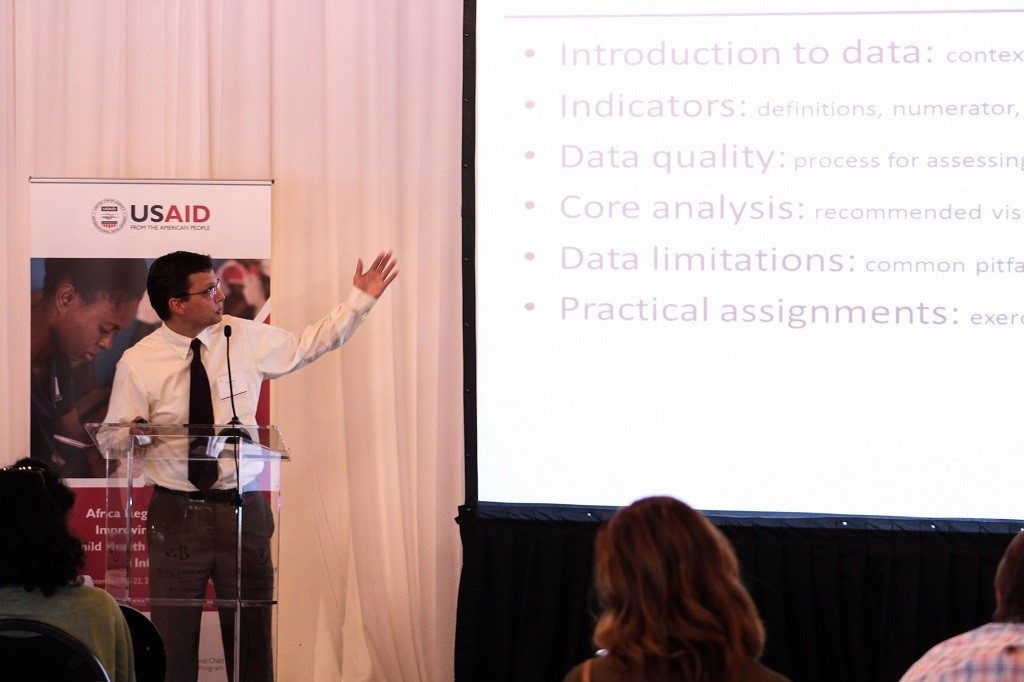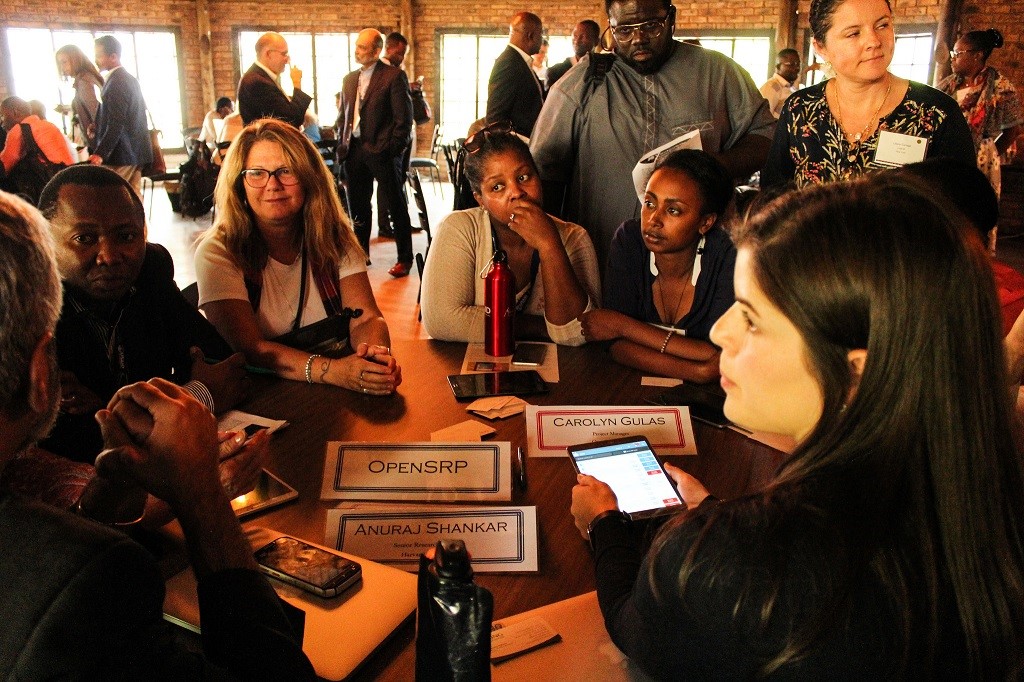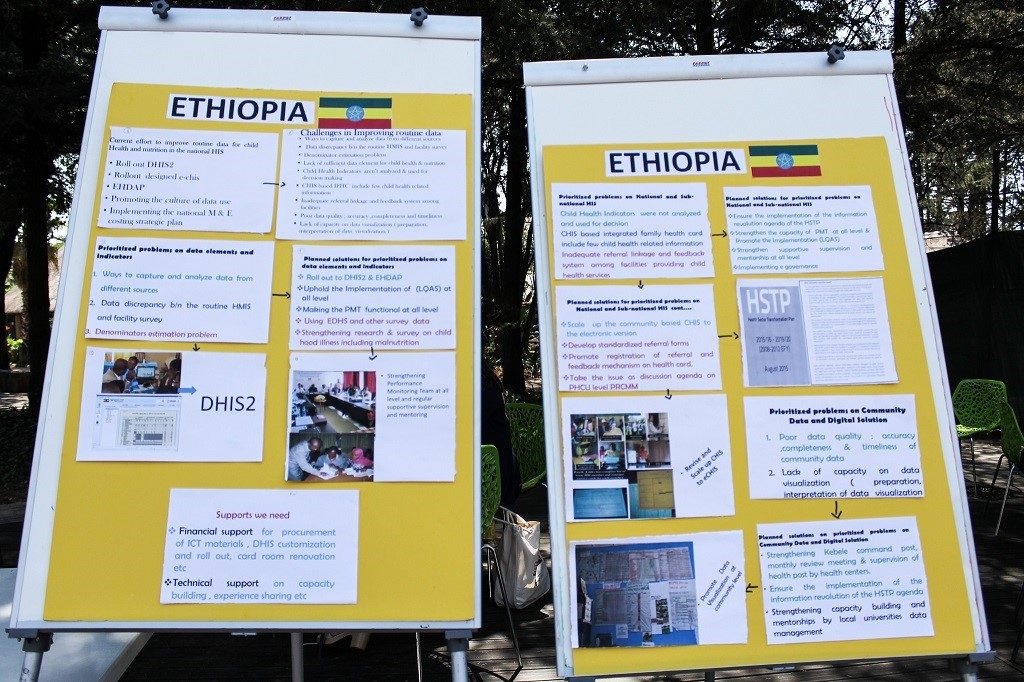This piece also appeared on the JSI and Routine Health Information Network websites.
With a focus on strengthening routine monitoring of child health services, USAID and MCSP hosted an Africa Regional Workshop in Johannesburg this September. The four-day workshop – entitled Improving Routine Data for Child Health in National Health Information Systems – was an energetic and productive affair, with more than 90 participants in attendance from 15+ countries.
Presentations and discussions focused on three thematic areas: data indicators and elements; national and sub-national Health Management Information Systems (HMIS); and community data. Preliminary findings from the MCSP HMIS study were also shared.
Theresa Diaz, World Health Organization Coordinator, stressed the importance of the event, as well as the unique opportunity it presented: “We haven’t had the opportunity to bring different countries together, different people and their data and their programs and put them all together and say: What is it that we really need from a routine HMIS?”

Attendees did much more than listen, however. Six country delegations – from Democratic Republic of Congo, Nigeria, Mozambique, Ethiopia, Uganda and Zimbabwe – actively worked toward country action plans, drafts of which were complete by workshop end. Mornings were spent absorbing information from various presentations from the global level and many country examples of promising approaches. In the afternoons, country teams used information from the day’s presentations to inform their country plans to strengthen the availability, quality and use of child health and nutrition data in their health information systems (HIS).
Robust HIS are necessary to routinely collect data to monitor, evaluate and make program management decisions to ensure high-quality facility- and community-based child health and nutrition services. Many countries have extensive experience collecting facility-based data for child health, often focusing on reportable diseases and preventative and curative services delivered to children. However, others do not. And implementation and institutionalization of community-based HIS is even less consistent across countries.

Because countries are at different stages of strengthening and rolling out their routine HIS, there was extensive south-to-south learning across the delegations and participants. Many expressed a better understanding of the need to harmonize systems and reduce fragmentation across different actors, and learned from the approaches used by countries that have already done this. Participants noted greater appreciation for the digitalization of data collection, management and use.
“One area that I felt was really interesting was community data,” said Nonhlanhla Dlamini, Chief Director of Child, Adolescent & School Health at the South African National Department of Health. “Because with child health programs, we have to go out to those households and get those communities involved.”
On the final day, country delegations presented, highlighting both their personal workshop highlights as well as their respective country action plans. The latter identified gaps in current HIS and plans to address them in the near future.

The ultimate goal of collecting child health and nutrition data is its use for individual clinical care and program management decisions that improve related services. However, this data must first be available, accessible and of high quality.
The workshop was a resounding success in advancing this goal! In many countries, at both community and facility levels, it is often under resourced frontline health workers who enter duplicative data into paper-based systems—data which is then not used effectively for decision-making. Workshop attendees learned how digital tools are being used to collect data as part of service provision and shared across interoperable information systems. This interoperability allows development of people-centered information systems and facilitates continuity of care.
The continued challenge is to then ensure that information is analyzed at all levels of the system and provided back to the primary and community levels along with any resulting actions. To illustrate this, presenters discussed both electronic dashboards (at the Ministry level) as well as paper-based approaches (at the community level). As long as leadership, accountability and action accompany the analysis, they stressed, both approaches can be effective.
Participants were exposed to lessons learned and challenges – as well as promising approaches and solutions – in collecting and using child health and nutrition data available through national HIS. The event helped to translate global and country learning into specific actions to improve routine monitoring of child health and nutrition services, and ultimately child health and nutrition programming. Only then can sound, data-driven decisions can be made.
“It’s been especially helpful for me as a counterpart from USAID to learn about the country action plans that have resulted from our work together this week,” said Nefra Faltas, USAID Child Health Advisor. She and her colleagues have “a lot to reflect on,” she said, in terms of how to support countries to meet their goals.
Without exception, all attendees who completed a post-event evaluation described the event as beneficial to their work, and said they were taking home information worth sharing with their colleagues. MCSP will be working with country teams to help bring their action plans to fruition.
To see all workshop presentations and resources, visit the CCM Central website. And to watch videos from the event, click here.

